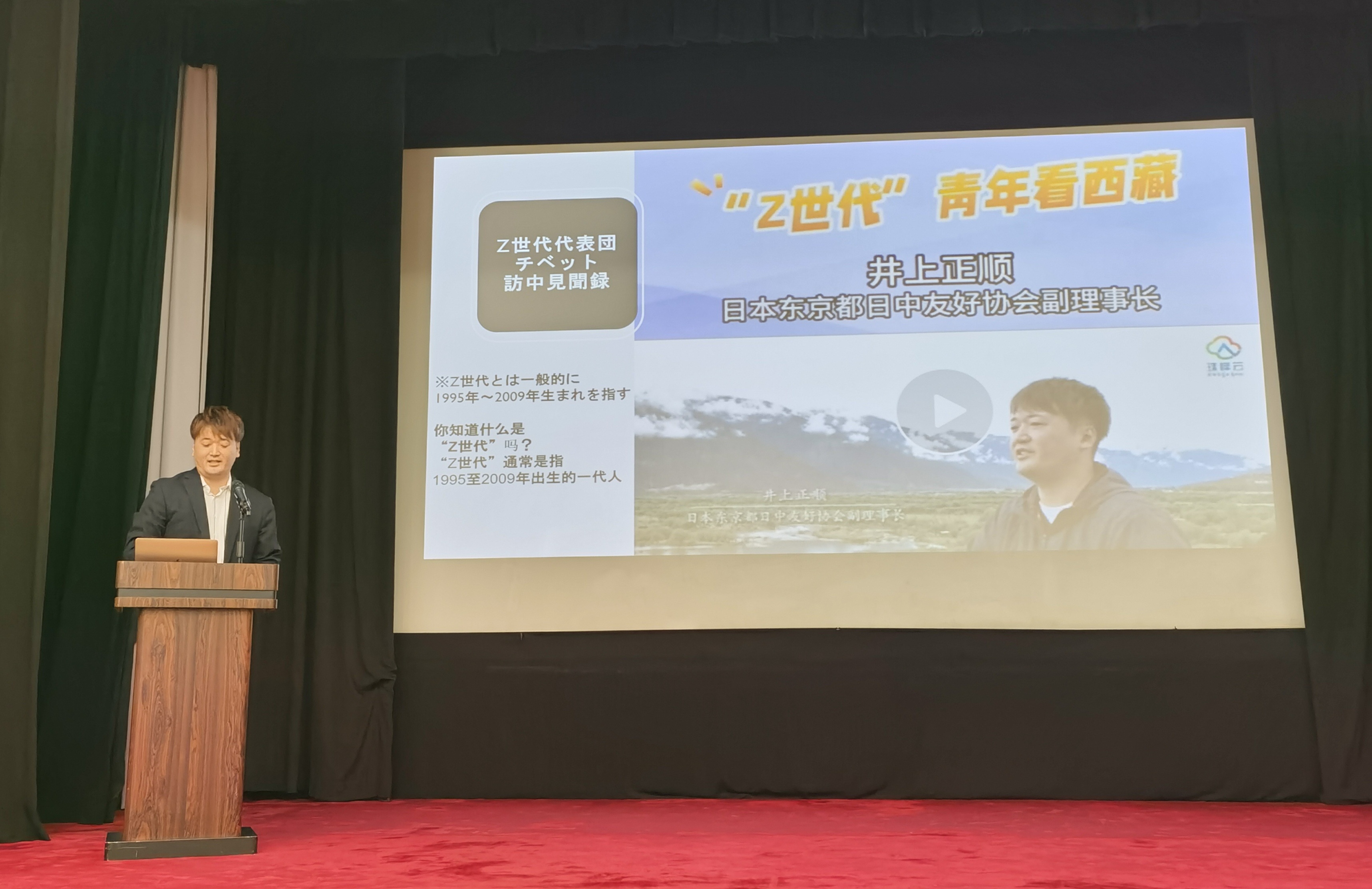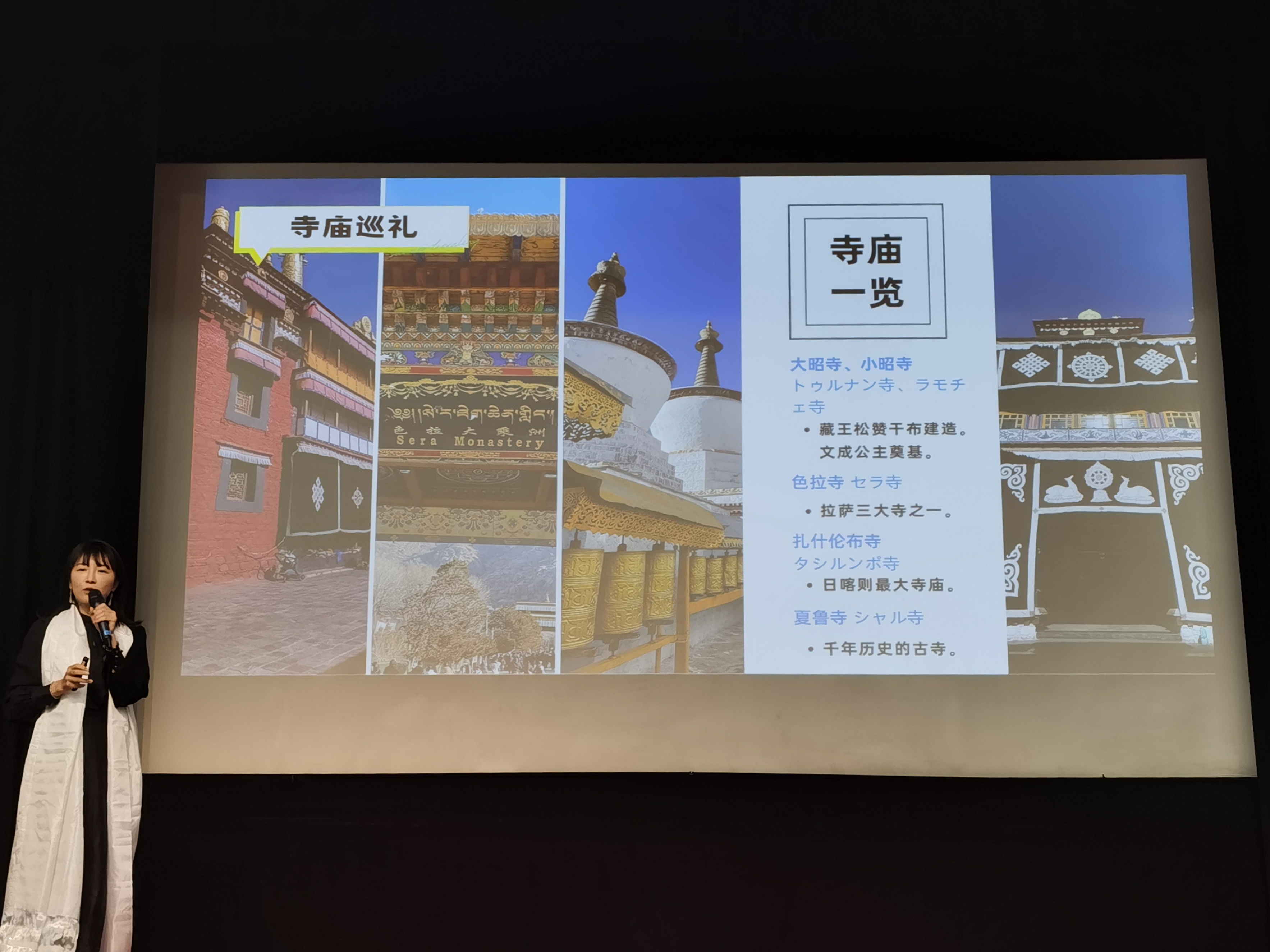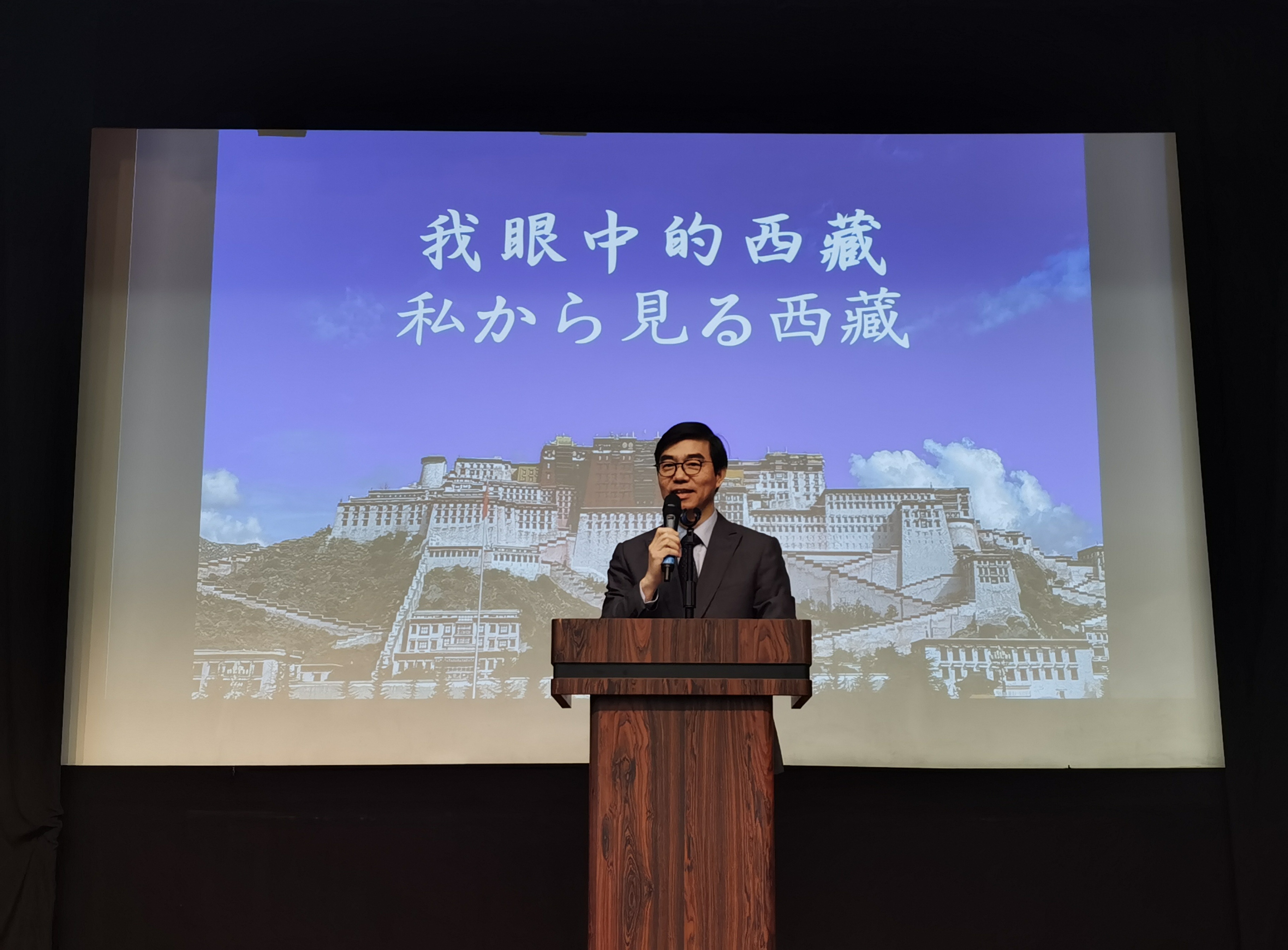
TOKYO -- Upon arriving in China’s Xizang autonomous region with his group, Tokyo-born 32-year-old Masayuki Inoue was instantly captivated by the region’s natural beauty.
“One thing that struck everyone was how close the clouds appeared. At such a high altitude, the clouds seemed almost within reach. Being surrounded by such breathtaking 360-degree scenery was overwhelming,” said Inoue, the vice-chairman of the Tokyo Japan-China Friendship Association.
“When I returned to Tokyo, I found myself thinking, ‘Wow, no mountains in sight?’ That remarkable landscape left a deep impression, even in the midst of our busy schedule,” Inoue said of his experience visiting Xizang while speaking to Japanese students in Tokyo on Nov 20.
At the recommendation of the Chinese embassy in Japan, Inoue joined a delegation of 12 representatives from 10 countries on a visit to Xizang from Sept 23 to 28. He was the only participant from Japan.
The group visited the Yarlung Zangbo Grand Canyon National Park, a renowned tourist spot located along the Yarlung Zangbo River.
“It’s absolutely stunning. The park exemplifies how nature conservation and tourism development can coexist harmoniously … I never imagined I’d encounter rivers of such grandeur in Xizang,” Inoue said.
“The experience was unforgettable. In summer, visitors can even camp here, and it made me think, ‘I’d love to come back someday’,” Inoue added.
He is now planning to organize a delegation to Xizang next year, aiming to encourage greater participation from Japanese youth in such exchanges.
The itinerary also included visits to unique locations, such as a Tibetan resettlement village created to relocate people from regions with harsh living conditions and frequent natural disasters.

The group also explored the Southeast Tibetan Cultural Heritage Museum, which houses a diverse collection of artifacts, including ancient Tibetan currencies, excavated relics, and cultural items showcasing the traditions of local ethnic minorities.
Inoue expressed amazement at Xizang’s vibrant consumer culture and advanced manufacturing capabilities. He noted that many locals spoke English, and some even knew Japanese.
He also discovered that a small number of Japanese individuals married Tibetans and settled in the region, sparking his interest in learning about their lives.
“There are Japanese travel tours, but these are quite expensive,” Inoue said, noting a potential growth area for tourism.
“By offering more affordable packages and expanding content beyond traditional Buddhist-focused attractions to include museums and cultural experiences, we could draw more interest from younger Japanese travelers,” he explained.
Inoue also noted that economic exchanges between Japan and Xizang remain limited.
“There aren’t any prominent Japanese brands in Xizang. Bringing these services to the region could unlock untapped opportunities. Strengthening exchanges between Japan and Xizang could foster significant economic growth,” he said.
Tenjin Shimizu, president of the Japan-Xizang Economic, Cultural, and Trade Exchange Association, is a Japanese citizen born in Xizang. For the past 25 years, he has lived in Japan, actively engaged in promoting trade and business exchanges.
“Xizang is an extraordinary place — the food is delicious, the air is pristine, and access has significantly improved with regular flights connecting it to the world,” Shimizu said during Nov 20’s exchange activity.
“Modern Xizang is vibrant and thriving, a reality quite different from the image often portrayed internationally,” he added, encouraging participants to visit and experience Xizang firsthand.
During his visit to Xizang last year, Shimizu explored opportunities to address environmental challenges. He established a company in Japan to promote future collaborations between Japan and the Himalayan region, focusing on environmental conservation.
“When I was young, I could see beautiful snow-capped mountains from my home in Xizang,” Shimizu recalled.
“But over the years, those peaks have darkened due to global environmental degradation. This reality drives my commitment to environmental preservation. I believe that Japan’s advanced technologies can help improve conditions in Xizang,” he said.
Japan has long been a leader in tackling environmental issues, implementing measures such as incineration technology and waste management since the Showa era.
With the support of the Chinese government and other stakeholders, Shimizu said he believes significant progress is possible.
“Historically, Tibetans haven’t had many opportunities for international collaboration, but that is changing,” Shimizu said.
“Japanese cars are becoming increasingly popular in Xizang, symbolizing the growing connection between the two regions. I firmly believe that Japan’s innovative industries and companies can make a meaningful impact (on Tibetan development),” he added.

Shi Yong, minister of the Chinese embassy in Japan, stated that clean energy now accounts for over 90 percent of Xizang’s electricity, with electricity costs remaining very low, at just 0.49 yuan ($0.07) per kilowatt-hour for residential use.
“Xizang is taking full advantage of its energy and transportation strengths to develop green technology industries and protect the environment,” Shi said. He also highlighted that 36 percent of Xizang’s land is designated as nature reserves.
Shi expressed his delight at seeing the younger generations of both China and Japan displaying broad perspectives, excellent communication skills, and a strong dedication to fostering friendly exchanges between the two nations.
This, he said, reinforces his confidence in the future of Sino-Japanese relations.
Contact the writer at jiangxueqing@chinadaily.com.cn


